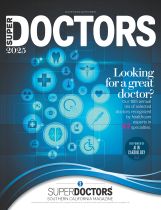Articles From the Agency for Healthcare and Quality (AHRQ)
Press Release Date: March 5, 2012
When asked to choose a health care provider based only on cost, consumers choose the more expensive option, according to a new study funded by HHS' Agency for Healthcare Research and Quality (AHRQ) that appears in the March issue of Health Affairs.
The study found that consumers equate cost with quality and worry that lower cost means lower quality care. But higher costs may indicate unnecessary services or inefficiencies, so cost information alone does not help consumers get the best value for their health care dollar, according to the study.
The study, entitled "An Experiment Shows That a Well-Designed Report on Costs and Quality Can Help Consumers Choose High-Value Health Care," found that when consumers were shown the right mix of cost and quality information, they were better able to choose high-value health care providers-defined as those who deliver high-quality care at a lower cost.
Health care consumers want to visit high-quality doctors and hospitals, and many public report cards are available to help them compare providers. However, few report cards include information on cost, and there has been little scientific evidence to guide the presentation of that information to help consumers choose high value providers.
A team of researchers, led by Judith H. Hibbard, Dr. P.H., at the University of Oregon in Eugene, studied 1,400 employees in a randomized experiment to find out how they responded to different presentations of quality and cost information. When providers were clearly identified as high quality, cost had less influence on consumers' decisions and consumers were more likely to choose a provider with lower cost but better quality than a high-cost provider.
"This study has important implications for the more than 150 public reports on physician and hospital care," said AHRQ Director Carolyn M. Clancy, M.D. "It's not simply a question of providing information on cost, but providing it in a way that is integrated with quality scores."
The study explored a number of ways to present cost and quality information effectively, using combinations of symbols such as dollar signs and stars, specific information such as dollar amounts and percentages, and labels such as "appropriate use" or "better." Consumers were more likely to choose high-value providers when presented with strong, unambiguous quality and cost information. In addition, a check mark indicating a "high-value" provider, along with the cost and quality information, also helped consumers use the information to make high-value choices. Given strong quality signals, consumers were also more confident in their choices.
The study's findings have implications for the design of public report cards that offer consumers information on the quality and cost of health care providers. Although report producers have been adopting strategies to help consumers process and use comparative information on quality and cost, many reporting websites still use overly technical information or present other barriers to easy comprehension, according to the study.
For additional AHRQ information about public reporting, please visit http://mn-admin.keypromedia.com/path/publicreporting.htm.
For more information, please contact AHRQ Public Affairs: (301) 427-1248 or (301) 427-1539.
Use Twitter to get AHRQ news updates: http://www.twitter.com/ahrqnews/

